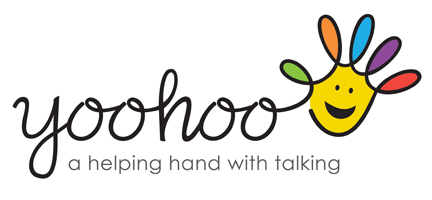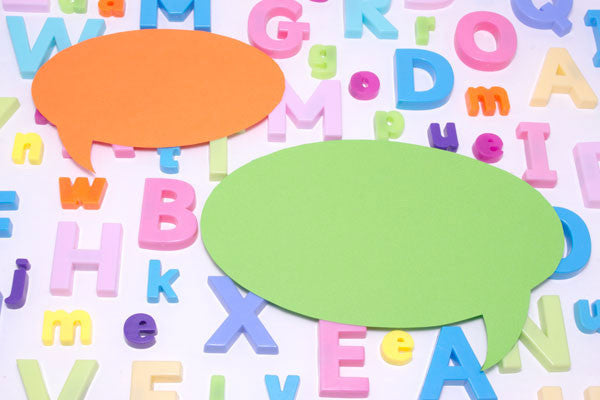Language is central to learning. It is such a precious commodity which we often take for granted. But for some children speech, language and communication is not so naturally acquired. For these children the world can seem confusing, complicated and scary. This can lead to frustration, anxiety, annoyance and fatigue. All of which can be shown through a child’s behaviour – be it that they hide away and become passive communicators or fight everything and everyone and become aggressive communicators. All behaviour is communication and for these children we need to help them crack the code for speech, language and communication.
A study by the Basic Skills Agency (in 2002) reported that – in the opinion of teachers – 50% of children begin school lacking skills that are vital for getting off to a good start in education. Source: www.bbc.co.uk/cbeebies/grownups/speech-and-language-difficulties
Studies indicate that 2 to 3 students in every classroom have significant communication difficulties. Source: www.ican.org.uk/What_is_the_issue?ABout%20SLCN?How%20many%20children%%20have%20SLCN.aspx
So, how can your own child, or a child starting at your school, be supported?
Unfortunately, there is no simple, quick and easy fix. However, knowing the child and understanding that they are not being lazy or doing it on purpose is a good place to start.
Having worked as a therapist for over 16 years I have tried numerous resources, played games and made activities. Here are my 10 top tips:
- Make sure that when you talk with the child you get down to their level and face them.
- Listen and say back what you hear your child say. If they use a different sound still accept what they have said but model the correct way in your talking. For example if your child spots a car and says “tar” your ideal response would be “Yes, car” If you child sees a car and points at it making a vocalisation (sound but not spoken words) they are most probably having a go at telling you about it. A good response what be “Car, your saw a car”.
- Use gesture in your talking. I am a big fan of Makaton [Source: www.makaton.org] and Cued Articulation [Source: Jane Passy, Cued Articulation Consonants and Vowels]. These can help support vocabulary development (understanding and use of language) and speech sound development. By using gesture you naturally give the child a point of reference. You give them a clue to the language or the sound being used. You also tend to slow your own talking down which just allows the child to catch all that is said.
- Play a good old fashioned game of years gone by - Kim’s game [I do not know who to reference for this game but who ever came up with it – thank you] You place items on a tray, cover with a tea towel and take one away. Watch with utter amazement how exciting this is for a child. Then help them work out what has gone. This simple little game can target visual memory, vocabulary naming, word retrieval, speech sounds, taking turns, attention and focus. Pure gem of a game!
- Play with your child and engage in their world. During the play add narrative (talk about that they are doing) or add to the language that they use. Try not to fill the play with questions as this can increase the demand on them. Comment instead. You can say things like “tea pot, you are making tea”. “pour in the cup”, “stirring the tea” “yummy tea”.
- Play commercially available games that promote turn taking, naming, waiting and listening. Being able to take turns in a game is a building block leading to taking turns in conversation. My top games are: Pop up Pirates, Ali Baba, Monkey Business, Guess Who, Springy Spiders, Fishing games, Wobbly Chef, Snakes and Ladders. I have no affiliation with any of these companies or organisations I just have used these games a lot and feel they do a jolly good job. Most of these can be found at toy shops, online or in Charity Shops.
- Repeat, repeat, repeat the vocabulary that you use with your child. A child needs to hear sounds and words at least 100 times before they will even start trying to say it. Don't limit how many times you say the same word. [Source: Luke and Hollie www.home-speech-home.com/how-to-improve-communication-skills.html ]
- Use a multi-sensory approach to learning. When babies learn they feel, mouth, smell, hear and experience the words around them. As your child develops you need to keep exposing your child to opportunities to experience vocabulary as a whole. A feely bag is a great tool. Place objects in a bag and encourage your child to guess what it might be through touch (tactile). When they pull it out they can then see (visual) what it was, and associate this with how it feels. They will then hear you label it (auditory) and even smell it (olfactory). If the item does something they can even make it do it. You have helped your child be a multisensory, kinaesthetic learner.
- Sing songs. Choose nice short songs with a simple pattern/rhythm. As your child becomes more familiar with them start to leave pauses/gaps. This allows opportunities for your child to insert the right words.
- Look at books. Great stories are ones that have lovely bright, accessible pictures that support the story line. You do not always have to read the words in the book. Be creative. Simplify for your child or even just talk about what the picture shows. Re-visit a book many times. Repetition is really important. Just like with the songs leave pauses and encourage your child to fill the gap.
yoohoo has designed the resource Chatty Magpie to bring a little therapy to home, nursery and school. They are little boxes ready to support a child with speech, language and memory challenges. They include many of the principles and ideas from the top ten. We use Chatty Magpies with the children we see. Parents have told us that they make therapy more ‘do-able’ at home and allow for other family members to be involved. Teachers have said that they allow for bespoke, therapy based activities to be completed in class and 1:1 which incorporate topic vocabulary and sounds.
Every child deserves a chance. Give your child a helping hand with talking.


Leave a comment